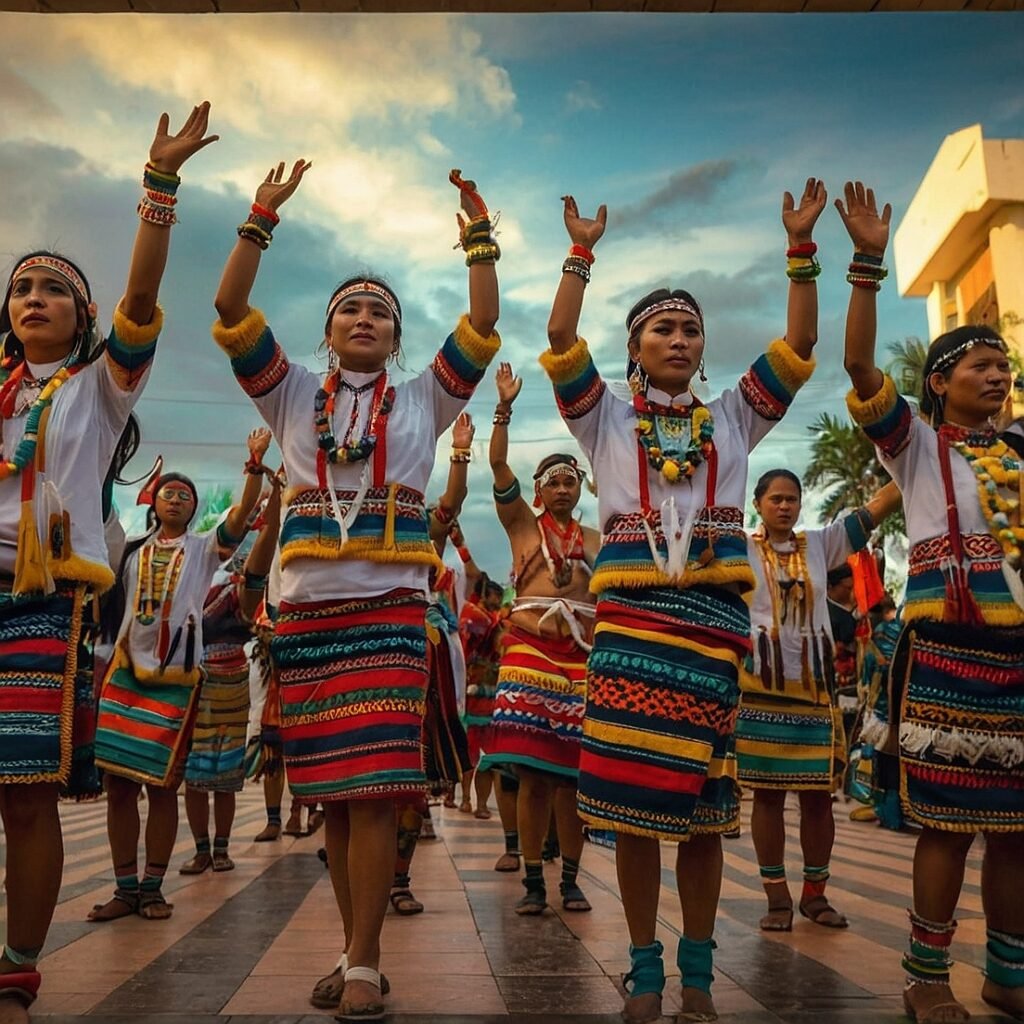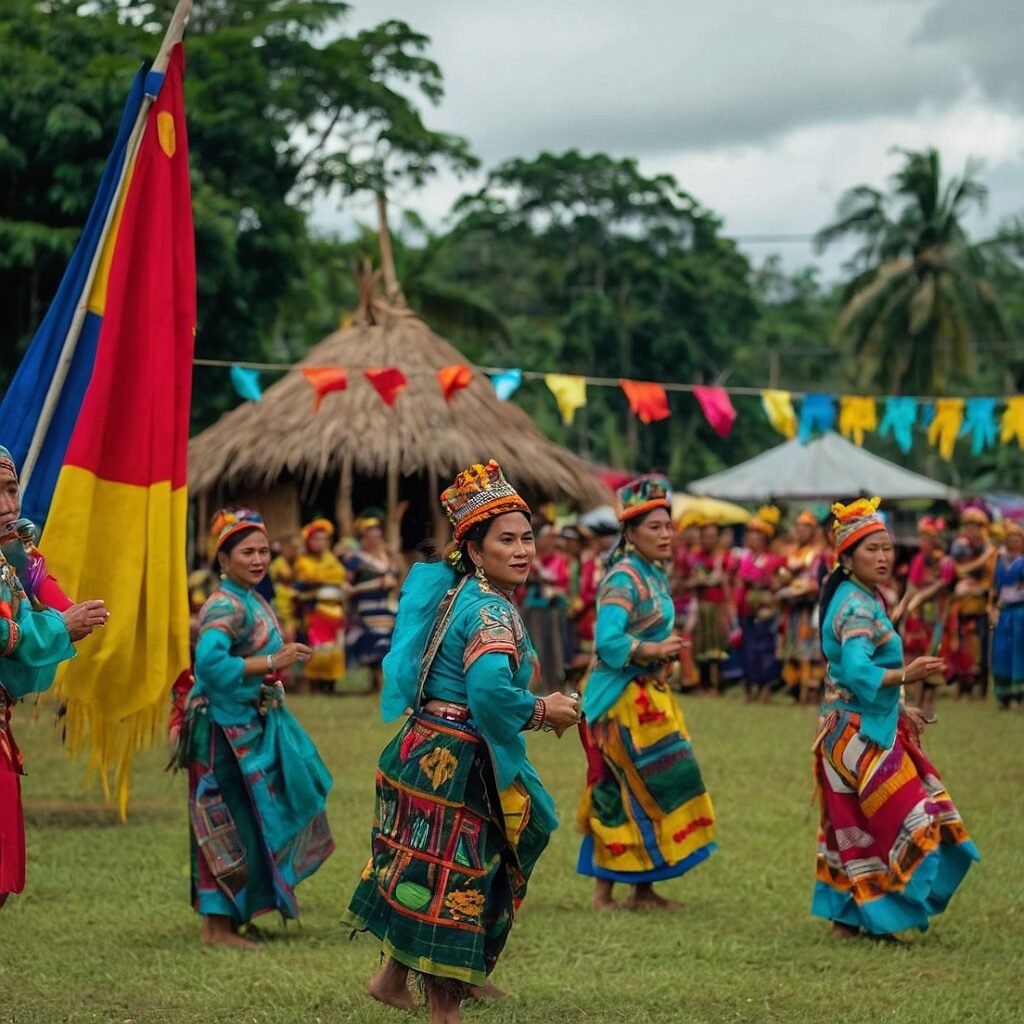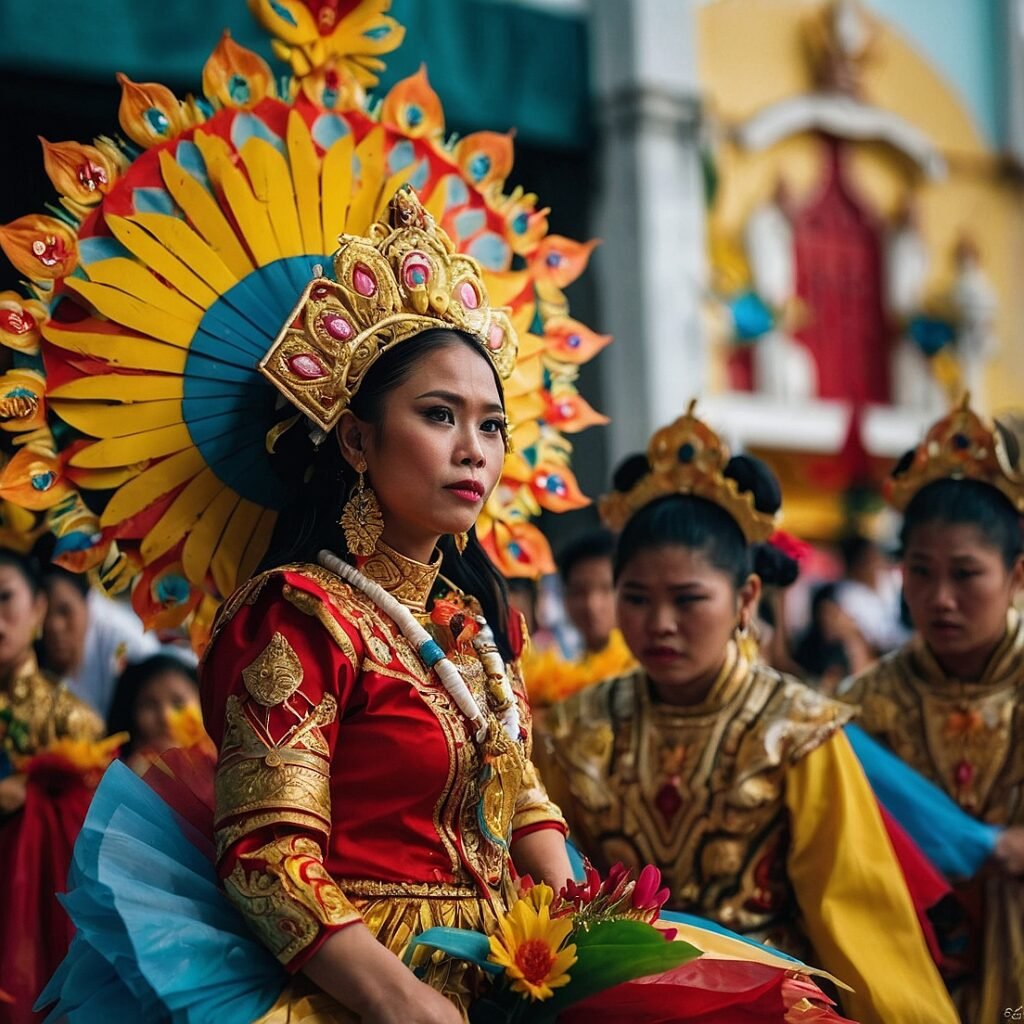Welcome, fellow culture enthusiasts and adventure seekers! Today, we’re diving deep into one of the most vibrant and colorful celebrations in the Philippines – the Pattarradday Festival of Santiago City. This annual extravaganza is more than just a feast for the senses; it’s a living, breathing testament to the rich indigenous heritage of the region. So, buckle up and get ready for a journey through time, tradition, and pure Filipino joy!
Imagine a kaleidoscope of colors, the rhythmic beat of tribal drums, and the infectious energy of thousands of people coming together to celebrate their roots. That’s the Pattarradday Festival for you! But what makes this festival so special? Why does it draw crowds from all corners of the Philippines and beyond? Let’s unravel this cultural phenomenon together and discover why the Pattarradday Festival should be on every traveler’s bucket list.
In the next few sections, we’ll explore the festival’s origins, its significance to the local community, the spectacular events that make it unique, and how you can make the most of your visit. Whether you’re a culture vulture, a photography enthusiast, or simply someone looking for an unforgettable experience, the Pattarradday Festival has something for everyone. So, let’s embark on this exciting cultural adventure!
The Roots of Pattarradday: A Journey Through Time
What’s in a Name?
Before we dive into the festival itself, let’s talk about that intriguing name – Pattarradday. It’s not just a random collection of syllables; it’s a word packed with meaning and history. “Pattarradday” comes from the Ibanag language, spoken by one of the indigenous groups in the Cagayan Valley region. It translates to “unity” or “togetherness” – and boy, does this festival live up to its name!
The choice of this name is no coincidence. It reflects the festival’s core purpose: to bring together the diverse indigenous communities of Santiago City and the surrounding areas. It’s a celebration of their shared heritage, a platform to showcase their unique traditions, and a reminder of the strength that comes from unity in diversity.
A Brief History Lesson
Now, let’s hop into our time machine and travel back to the festival’s origins. The Pattarradday Festival isn’t some ancient celebration lost in the mists of time. In fact, it’s a relatively young festival, having been established in the late 20th century. But don’t let its youth fool you – this festival is deeply rooted in centuries-old traditions and cultural practices.
The festival was officially launched in 1998 as part of Santiago City’s cityhood celebration. The local government, recognizing the rich cultural tapestry of the region, decided to create an event that would not only celebrate this heritage but also preserve it for future generations. It was a bold move, combining elements from various indigenous festivals and traditions into one grand celebration.
Since its inception, the Pattarradday Festival has grown exponentially, evolving from a local celebration to a nationally recognized event. It has become a powerful tool for cultural preservation, education, and even economic development. Each year, the festival attracts more visitors, shining a spotlight on the often-overlooked indigenous cultures of Northern Luzon.
The Heart of Pattarradday: Celebrating Indigenous Culture
A Melting Pot of Traditions
One of the most fascinating aspects of the Pattarradday Festival is its representation of multiple indigenous groups. Santiago City and its surrounding areas are home to several ethnic communities, each with its own distinct traditions, languages, and cultural practices. The festival serves as a melting pot, bringing these diverse elements together in a harmonious celebration.
The main indigenous groups represented in the festival include:
| Indigenous Group | Notable Features |
|---|---|
| Ibanag | Known for their intricate weaving and pottery |
| Gaddang | Famous for their colorful traditional costumes and beadwork |
| Yogad | Recognized for their unique agricultural practices and rituals |
| Itawis | Notable for their traditional music and dance |
Each of these groups contributes its unique flavors to the festival, creating a rich, multi-layered cultural experience. From traditional dances and music to handicrafts and culinary delights, the Pattarradday Festival offers a comprehensive showcase of Northern Luzon’s indigenous heritage.
More Than Just a Party
While the Pattarradday Festival is undoubtedly a joyous celebration, it’s important to understand that it’s much more than just a colorful party. For the indigenous communities involved, this festival is a vital link to their past and a bridge to their future. It’s an opportunity to pass down traditions to younger generations, to educate outsiders about their culture, and to take pride in their heritage.
The festival also plays a crucial role in cultural preservation. In an increasingly globalized world, many indigenous traditions are at risk of being lost. By providing a platform for these practices to be showcased and celebrated, the Pattarradday Festival helps ensure their survival. It’s a living, breathing cultural archive, keeping ancient traditions alive in the modern world.
Moreover, the festival serves as a powerful educational tool. For many visitors, it’s their first exposure to the rich indigenous cultures of Northern Luzon. Through the festival, they gain a deeper understanding and appreciation of these cultures, helping to promote respect and cultural sensitivity.
The Festival Experience: A Feast for the Senses
A Riot of Colors and Sounds
Picture this: streets lined with vibrant banners, the air filled with the sounds of traditional music, and everywhere you look, a explosion of colors from traditional costumes and decorations. That’s the Pattarradday Festival in full swing! From the moment you arrive in Santiago City during the festival, you’re immersed in a world of sensory delights.
One of the most striking visual elements of the festival is the traditional attire worn by participants. Each indigenous group has its own distinctive clothing, often featuring intricate patterns, vibrant colors, and unique accessories. The Gaddang, for instance, are known for their eye-catching red and black ensembles adorned with intricate beadwork. Seeing hundreds of people in these traditional outfits, moving together in dance or parade, is a truly unforgettable sight.
The festival’s soundscape is equally captivating. Traditional instruments like gongs, bamboo flutes, and drums create a rhythmic backdrop to the celebrations. Each indigenous group has its own musical traditions, and during the festival, these diverse sounds blend together in a unique symphony that epitomizes the spirit of unity in diversity.
Parade of Pride
The highlight of the Pattarradday Festival for many visitors is the grand street parade. This isn’t your average parade – it’s a moving, living, breathing showcase of indigenous culture. Participants from various ethnic groups, decked out in their traditional finery, march through the streets of Santiago City, performing traditional dances and music along the way.
The parade is more than just a spectacle; it’s a statement of cultural pride. Each group strives to present the best of their traditions, resulting in a friendly competition that pushes the boundaries of creativity and authenticity. From elaborate floats depicting traditional village scenes to dance troupes performing centuries-old rituals, the parade offers a comprehensive overview of the region’s cultural wealth.
For spectators, the parade is an interactive experience. Don’t be surprised if you find yourself pulled into a dance or offered a taste of traditional delicacies by enthusiastic participants. This inclusivity is part of what makes the Pattarradday Festival so special – it’s not just a show, but an invitation to be part of something bigger.
Beyond the Parade: A Multifaceted Celebration
Cultural Competitions: Showcasing Skills and Traditions
While the street parade might be the most visible part of the Pattarradday Festival, it’s just one piece of a much larger cultural puzzle. Throughout the festival period, Santiago City becomes a stage for various competitions that showcase traditional skills and practices.
Here’s a glimpse of some of the competitions you might encounter:
| Competition | Description |
|---|---|
| Traditional Dance | Groups perform ancient dances, often telling stories of their people’s history and beliefs |
| Indigenous Music | Musicians compete using traditional instruments, keeping age-old melodies alive |
| Weaving Contest | Skilled artisans demonstrate their mastery of traditional weaving techniques |
| Indigenous Games | Ancient sports and games are revived, offering a glimpse into traditional pastimes |
| Culinary Challenge | Local chefs prepare traditional dishes, celebrating the unique flavors of indigenous cuisine |
These competitions serve multiple purposes. They encourage the preservation and perfection of traditional skills, provide entertainment for festival-goers, and offer cash prizes that can make a significant difference in the lives of participants from rural communities.
A Gastronomic Adventure
No cultural festival would be complete without food, and the Pattarradday Festival doesn’t disappoint in this regard. The festival is an excellent opportunity to embark on a gastronomic adventure, sampling dishes that you’re unlikely to find in any restaurant menu.
Indigenous cuisine takes center stage during the festival, with food stalls and markets offering a wide array of traditional delicacies. From the famous Ibanag dish “sinanta” (a hearty soup made with native chicken and green papaya) to the Gaddang specialty “binayuyu” (sticky rice cakes wrapped in banana leaves), there’s something to tantalize every taste bud.
What makes this culinary experience special is not just the unique flavors, but the stories behind each dish. Many of these recipes have been passed down through generations, each bite offering a taste of history and tradition. It’s not uncommon to find elderly community members manning food stalls, eager to share not just their food but also the stories and cultural significance behind each dish.
The Impact of Pattarradday: Beyond the Festival Grounds
Economic Boost: Festival as a Catalyst for Growth
While the Pattarradday Festival is primarily a cultural celebration, its impact extends far beyond the realm of tradition and heritage. The festival has become a significant economic driver for Santiago City and the surrounding areas. Let’s break down some of the ways the festival contributes to the local economy:
- Tourism Boost: The festival attracts thousands of visitors from across the Philippines and even internationally. These tourists need places to stay, food to eat, and often purchase souvenirs, directly benefiting local businesses.
- Artisan Opportunities: The festival provides a platform for local artisans to showcase and sell their crafts. Many indigenous artisans make a significant portion of their annual income during the festival period.
- Employment Generation: Organizing an event of this scale requires manpower. The festival creates temporary jobs in areas like event management, security, and logistics.
- Promotion of Local Products: The festival puts a spotlight on local products, from handicrafts to agricultural goods, helping to create new markets and business opportunities.
- Infrastructure Development: To accommodate the influx of visitors, the city often invests in improving infrastructure, which benefits locals long after the festival is over.
While it’s challenging to put an exact figure on the economic impact, it’s clear that the Pattarradday Festival has become a crucial part of Santiago City’s economic calendar.
Cultural Preservation and Education
Perhaps the most significant impact of the Pattarradday Festival is its role in cultural preservation and education. In an era where globalization threatens to homogenize cultures, festivals like Pattarradday serve as bulwarks against cultural erosion.
For the indigenous communities involved, the festival is a powerful motivator to keep traditions alive. Young people, who might otherwise be disconnected from their cultural roots, are encouraged to learn traditional dances, music, and crafts to participate in the festival. This intergenerational transfer of knowledge is crucial for the survival of these ancient practices.
Moreover, the festival serves as an educational platform for visitors. Many attendees come away with a newfound appreciation for the rich cultural tapestry of Northern Luzon. This increased awareness can lead to greater respect for indigenous rights and a more inclusive society.
The educational impact of the festival extends beyond its duration. Many schools in the region use the Pattarradday Festival as a teaching tool, incorporating lessons about local indigenous cultures into their curriculum. Some even organize field trips to the festival, allowing students to experience their cultural heritage firsthand.
Planning Your Pattarradday Experience: Tips for Visitors
When to Go
If you’re thinking of experiencing the Pattarradday Festival for yourself (and trust me, you should!), timing is everything. The festival typically takes place in the last week of June or the first week of July, coinciding with the founding anniversary of Santiago City. However, it’s always a good idea to check the exact dates for the year you plan to visit, as they can vary slightly from year to year.
The festival usually lasts for about a week, with different events and activities spread out over this period. The grand street parade, often considered the highlight of the festival, usually takes place on the penultimate day. If you can only attend for a day or two, try to time your visit to coincide with this parade.
Where to Stay
Santiago City sees a significant influx of visitors during the Pattarradday Festival, so it’s crucial to book your accommodation well in advance. The city offers a range of options to suit different budgets, from basic guesthouses to more upscale hotels. Here are a few tips:
- Location is key: Try to find accommodation near the city center, where most of the festival activities take place.
- Book early: The best places fill up quickly, especially those within walking distance of the main events.
- Consider homestays: For a more immersive cultural experience, look into homestay options with local families.
- Be prepared for higher prices: Like any popular event, accommodation prices may increase during the festival period.
What to Bring
Preparing for the Pattarradday Festival requires a bit of thoughtful packing. Here’s a quick checklist to help you make the most of your experience:
- Comfortable walking shoes: You’ll be on your feet a lot, especially during the street parade.
- Light, breathable clothing: June/July can be hot and humid in Santiago City.
- Rain gear: Be prepared for sudden tropical showers.
- Camera: You’ll want to capture the vibrant colors and performances.
- Cash: While some vendors might accept cards, cash is king at most festival stalls.
- Reusable water bottle: Stay hydrated in the tropical heat.
- Sunscreen and hat: Protect yourself from the strong Philippine sun.
- An open mind and respectful attitude: Remember, you’re not just attending a show, but participating in a meaningful cultural celebration.
The Spirit of Pattarradday
As we wrap up our journey through the Pattarradday Festival, it’s clear that this celebration is so much more than just a colorful event on the calendar. It’s a vibrant testament to the resilience and richness of indigenous cultures, a powerful engine for local economic development, and a bridge connecting past traditions with future generations.
The Pattarradday Festival embodies the very meaning of its name – unity and togetherness. It brings together diverse indigenous groups, uniting them in a celebration of their shared heritage. It connects urban dwellers with their rural roots, and introduces visitors to the often-overlooked cultural wealth of Northern Luzon.
For visitors, the festival offers a unique opportunity to immerse themselves in living, breathing culture. It’s a chance to step out of the ordinary, to witness ancient traditions come to life, and to participate in a celebration that touches all the senses. From the pulsating rhythms of traditional music to the mouthwatering flavors of indigenous cuisine, from the riot of colors in traditional costumes to the warmth of local hospitality, the Pattarradday Festival is an experience that stays with you long after the last dance has ended.
But perhaps most importantly, the Pattarradday Festival reminds us of the value of cultural diversity. In a world that often seems to be growing more uniform, celebrations like this highlight the beauty and importance of our differences. They remind us that our unique cultural identities are not relics of the past, but living, evolving parts of our present and future.
So, whether you’re a culture enthusiast, a curious traveler, or someone looking to connect with their roots, the Pattarradday Festival awaits. Come, be part of this grand celebration of unity in diversity. Experience the warmth of Santiago City’s welcome, the pride of its indigenous communities, and the joy of a festival that truly embodies the spirit of the Philippines.
Disclaimer: The information in this blog post is based on data available up to 2021. While we strive for accuracy, details of the Pattarradday Festival may have changed since then. We encourage readers to check official sources for the most up-to-date information when planning their visit. If you notice any inaccuracies, please report them so we can correct them promptly.




